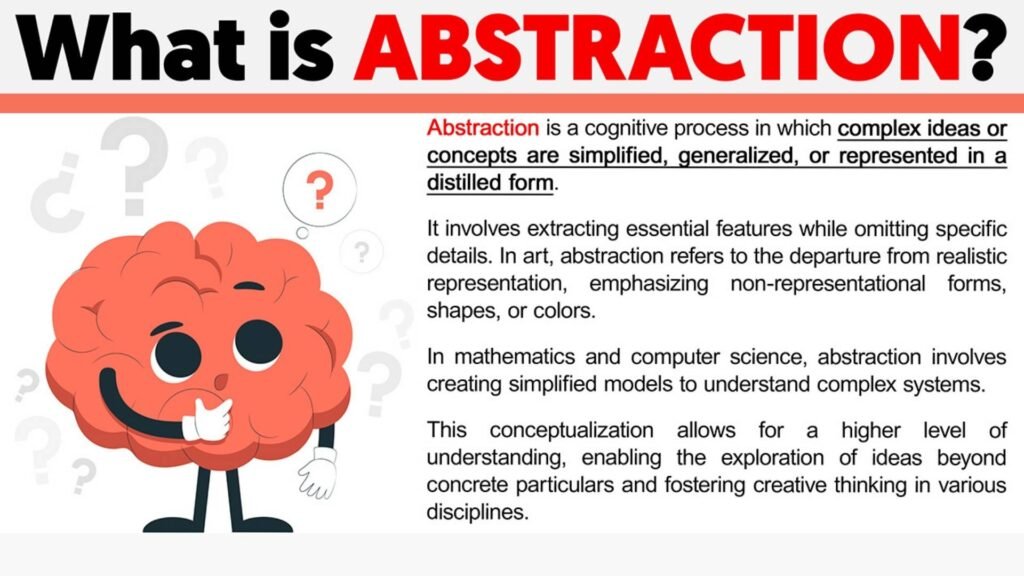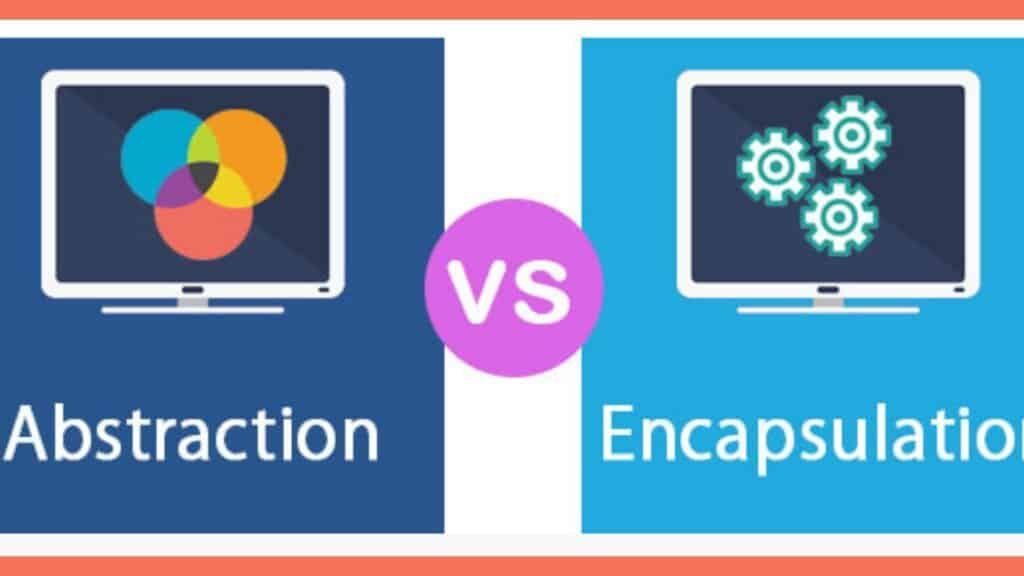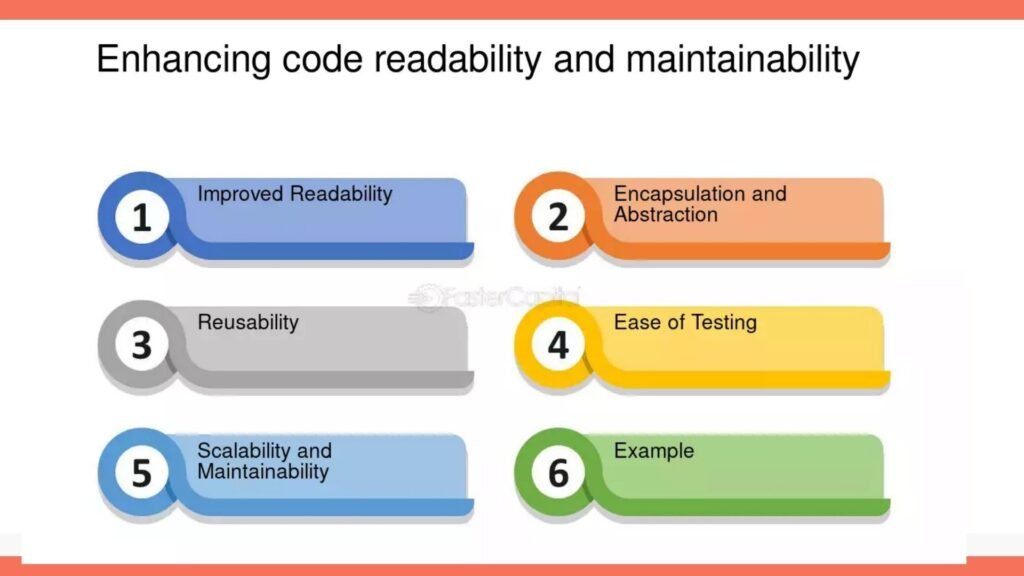In the world of software development, Object-Oriented Programming (OOP) stands out as a paradigm that mimics real-world interactions. One of its core components, abstraction, plays a pivotal role in handling complex systems by simplifying their representation. This blog post aims to unravel the mysteries of helping you understand its significance and implementation in OOP. Whether you’re a beginner programmer, a computer science student, or an experienced software developer, this guide will deepen your understanding of how abstraction can enhance your coding practices.
Introduction to Abstraction in OOP
Abstraction in OOP is akin to looking at the world through a simplified lens. It enables developers to focus on essential functionalities while concealing intricate details. Think it as a map—it provides a general idea of a location without showing every single street or building. In this blog post, we’ll explore its principles, its benefits, real-world applications, and how it integrates with other OOP concepts.
What Is Abstraction?
Abstraction is the process of identifying the crucial characteristics of an object while ignoring irrelevant details. In OOP, it allows developers to create models that represent real-world entities. By defining abstract classes or interfaces, programmers can design systems that highlight essential attributes while concealing unnecessary complexities. This approach promotes code clarity, readability, and maintainability.

At its core, it enables programmers to create high-level blueprints that dictate the fundamental behaviors of objects. These blueprints act as templates for classes, ensuring consistency and conformity across the software architecture. By focusing on what an object does rather than how it does it, how it empowers developers to design scalable and flexible systems.
Code Example
Let’s consider an example involving a simple vehicle hierarchy. We’ll create an abstract class `Vehicle` that defines a blueprint for specific types of vehicles like `Car` and `Bicycle`.
java
// Abstract class Vehicle
abstract class Vehicle {
// Abstract method (no implementation)
abstract void startEngine();
// Concrete method with implementation
void stopEngine() {
System.out.println(“Engine stopped.”);
}
}
// Subclass Car that extends Vehicle
class Car extends Vehicle {
// Implementing the abstract method
void startEngine() {
System.out.println(“Car engine started.”);
}
}
// Subclass Bicycle that extends Vehicle
class Bicycle extends Vehicle {
// Implementing the abstract method
void startEngine() {
System.out.println(“Bicycle doesn’t have an engine to start.”);
}
}
public class Main {
public static void main(String[] args) {
Vehicle myCar = new Car();
myCar.startEngine(); // Output: Car engine started.
myCar.stopEngine(); // Output: Engine stopped.
Vehicle myBicycle = new Bicycle();
myBicycle.startEngine(); // Output: Bicycle doesn’t have an engine to start.
myBicycle.stopEngine(); // Output: Engine stopped.
}
}
In this code example, the `Vehicle` abstract class contains an abstract method `startEngine()`, which must be implemented by any concrete subclass. The `Car` and `Bicycle` classes provide specific implementations of this method, demonstrating how it allows you to define general behaviors in the abstract class, while individual subclasses focus on the pertinent details.
Abstraction vs. Encapsulation
While abstraction and encapsulation in oop are closely related, they serve distinct purposes in OOP. It focuses on simplifying complex systems by concentrating on essential features. Encapsulation, on the other hand, involves bundling data and methods within a class while restricting direct access to certain components in oop.

These two concepts work in tandem to achieve robust software design. It provides the overarching framework, while encapsulation ensures data integrity and security. Together, they contribute to the creation of cohesive, modular, and maintainable codebases. So, abstraction and encapsulation are important in oop.
Code Examples
To better understand we implemented in Python, let’s use similar examples involving a vehicle hierarchy.
Abstraction in Python
In Python, It implemented through abstract base classes and interfaces provided by the `abc` module.
python
from abc import ABC, abstractmethod
Abstract class Vehicle
class Vehicle(ABC):
# Abstract method (no implementation)
@abstractmethod
def start_engine(self):
pass
# Concrete method with implementation
def stop_engine(self):
print(“Engine stopped.”)
Subclass Car that extends Vehicle
class Car(Vehicle):
# Implementing the abstract method
def start_engine(self):
print(“Car engine started.”)
Subclass Bicycle that extends Vehicle
class Bicycle(Vehicle):
# Implementing the abstract method
def start_engine(self):
print(“Bicycle doesn’t have an engine to start.”)
Using the abstract classes
my_car = Car()
my_car.start_engine() # Output: Car engine started.
my_car.stop_engine() # Output: Engine stopped.
my_bicycle = Bicycle()
my_bicycle.start_engine() # Output: Bicycle doesn’t have an engine to start.
my_bicycle.stop_engine() # Output: Engine stopped.
“`
In this example, the `Vehicle` class is an abstract class with an abstract method `start_engine()`. Any subclass must implement this method, ensuring that each vehicle type provides its specific logic.
Encapsulation in Python
Encapsulation in Python can be demonstrated by bundling data and methods within a class and using access modifiers to restrict access.
python
class Account:
def init(self, owner, balance=0):
self.owner = owner
self.__balance = balance # Private attribute
def deposit(self, amount):
if amount > 0:
self.__balance += amount
print(f”{amount} deposited. New balance: {self.__balance}”)
else:
print(“Deposit amount must be positive.”)
def withdraw(self, amount):
if 0 < amount <= self.__balance:
self.__balance -= amount
print(f”{amount} withdrawn. New balance: {self.__balance}”)
else:
print(“Insufficient balance or invalid amount.”)
def get_balance(self):
return self.__balance
Using the Account class
my_account = Account(“John Doe”, 1000)
my_account.deposit(500) # Output: 500 deposited. New balance: 1500
my_account.withdraw(200) # Output: 200 withdrawn. New balance: 1300
print(my_account.get_balance()) # Output: 1300
In this example, the `Account` class encapsulates account details and employs a private attribute `__balance` to keep data secure. Public methods like `deposit()`, `withdraw()`, and `get_balance()` are provided to interact with the account while ensuring proper control over the balance.
Real-World Examples
To grasp abstraction’s significance, consider real-world scenarios where it is applied daily. For instance, when you drive a car, you interact with a steering wheel, pedals, and a gear shift. You don’t need to understand how the engine works or how the wheels turn. The car’s design abstracts these complexities, allowing you to focus on driving.
Similarly, in software development, in oop, python, CPP simplifies interactions between components. It hides intricate implementation details, enabling developers to work at a higher level without being bogged down by minutiae.
How Abstraction Enhances Code Readability and Maintenance
In oop significantly improves code readability by providing a clear separation between interface and implementation. When developers focus on defining essential behaviors, they create code that is easier to understand and modify. This separation also enhances code maintainability, as changes to the implementation do not affect the interface. So abstraction are enhances the code readability and maintenance.

For example, consider a software application that processes customer data. By abstracting the data processing logic into a separate class, developers can modify the data handling algorithms without altering the application’s user interface. This modular approach streamlines maintenance, reduces the risk of introducing bugs, and ensures a consistent user experience.
The Role of Abstraction in Designing Scalable Software
Scalability is a critical consideration in modern software development, and it plays a vital role in achieving it. By focusing on core functionalities, it allows developers to design systems that can adapt to changing requirements and accommodate future growth.
When software is built on abstract principles, adding new features or expanding existing ones becomes more manageable. Developers can extend the system by implementing new classes or interfaces without disrupting the existing codebase. This scalability ensures that the software remains relevant and functional as business needs evolve.
Hiding Implementation Details
Abstraction excels in hiding implementation details, enabling developers to work at a higher level. By defining abstract classes or interfaces, programmers can create blueprints that focus on essential functions while concealing intricate mechanisms. This approach promotes a clear separation between what an object does and how it does it.
For instance, consider a software application that interacts with a database. By abstracting the database operations into an interface, developers can switch between different database systems without altering the application’s core logic. This flexibility streamlines development, simplifies testing, and enhances overall system agility.
Abstract Classes vs. Interfaces
Abstract classes and interfaces are fundamental tools in OOP that facilitate abstraction. While both serve to define essential behaviors, they are used in different scenarios.
Abstract classes in oop provide a base from which other classes can inherit. They can include both abstract methods (without implementation) and concrete methods (with implementation). This combination allows developers to create a hierarchy of related classes, each sharing common functionality.
Interfaces, on the other hand, define a contract that classes must adhere to. They specify a set of methods that implementing classes must provide, but they do not include any implementation themselves. Interfaces are ideal for achieving polymorphism, allowing different classes to implement the same interface in unique ways.
Future Trends in Abstraction
As technology evolves, the trends in abstraction are set to profoundly influence the landscape of software development. One significant trend is the rise of domain-specific languages (DSLs). These specialized languages simplify programming by providing abstracted, higher-level constructs tailored to specific domains, allowing developers to interact directly with domain concepts rather than general-purpose code structures. As a result, DSLs enhance productivity and facilitate more precise communication between stakeholders and developers.
Cloud computing and microservices architecture are also driving abstraction trends, encouraging the design of software that is modular and loosely coupled. The abstraction inherent in these frameworks allows services to be independently developed, tested, and deployed, which provides greater agility in responding to changing business needs and scaling services on demand.

Simultaneously, the integration of artificial intelligence (AI) and machine learning (ML) into software development introduces new dimensions to abstraction. Developers are increasingly utilizing abstract models and frameworks that wrap complex AI functions, making them accessible without needing detailed knowledge of underlying data science principles. This simplification accelerates AI adoption in diverse industries, from finance to healthcare.
Moreover, blockchain technology is reshaping data abstraction methods, offering decentralized and transparent solutions that abstract complex cryptographic protocols behind simple, user-friendly interfaces. As blockchain-based applications gain traction, the focus on creating secure, scalable abstractions will only increase.
In the Internet of Things (IoT), abstraction bridges the gap between billions of connected devices by standardizing communication protocols and interfaces. This abstraction ensures seamless interaction across devices, enhancing interoperability and creating smarter, more responsive environments.
Overall, future trends in abstraction will continue to emphasize simplification, modularity, and responsiveness, paving the way for more innovative and robust software solutions that address tomorrow’s challenges.
Benefits of Abstraction
The benefits of abstraction in OOP are numerous and impactful. By simplifying complex systems, abstraction enhances code readability and maintainability. It also promotes scalability, flexibility, and reusability.
Abstraction in oop encourages developers to think in terms of high-level concepts, resulting in cleaner and more organized code. Abstraction in oop allows for the creation of modular systems that can be easily extended or modified. Additionally, abstraction fosters a collaborative development environment by providing clear guidelines and expectations for class behavior.
Achieving Abstraction in Java, Python, and C++
Different programming languages offer various techniques for achieving abstraction. Let’s explore how abstraction can be implemented in Java, Python, and C++.
In Java, abstraction is commonly achieved through abstract classes and interfaces. Abstract classes provide a foundation for creating subclasses with shared characteristics, while interfaces define contracts for classes to implement.
java
abstract class Animal {
// Abstract method (does not have a body)
public abstract void makeSound();
// Regular method
public void sleep() {
System.out.println(“Zzz…”);
}
}
// Subclass (inherits from Animal)
class Dog extends Animal {
// The body of makeSound() is provided here
public void makeSound() {
System.out.println(“Woof Woof”);
}
}
public class Main {
public static void main(String[] args) {
Dog myDog = new Dog(); // Create a Dog object
myDog.makeSound(); // Call the abstract method
myDog.sleep(); // Call the regular method
}
}
In this Java example, the `Animal` class is an abstract class with an abstract method `makeSound()` and a regular method `sleep()`. The `Dog` class inherits from `Animal` and provides an implementation for the `makeSound()` method. This abstraction allows different animal classes to implement their unique sounds, while still sharing common behavior like sleeping.
Python leverages abstract base classes and interfaces to achieve abstraction. The `abc` module provides tools to define abstract methods and classes, enabling developers to create flexible and extensible designs.
python
from abc import ABC, abstractmethod
Abstract class
class Animal(ABC):
@abstractmethod
def make_sound(self):
pass
def sleep(self):
print(“Zzz…”)
Subclass (inherits from Animal)
class Dog(Animal):
def make_sound(self):
print(“Woof Woof”)
Another subclass (inherits from Animal)
class Cat(Animal):
def make_sound(self):
print(“Meow”)
Main function to demonstrate abstraction
def main():
my_dog = Dog() # Create a Dog object
my_cat = Cat() # Create a Cat object
my_dog.make_sound() # Call the abstract method in Dog
my_dog.sleep() # Call the regular method in Animal
my_cat.make_sound() # Call the abstract method in Cat
my_cat.sleep() # Call the regular method in Animal
if name == “main“:
main()
In this Python example, the `Animal` class is an abstract class with an abstract method `make_sound()` and a regular method `sleep()`. The `Dog` and `Cat` classes inherit from `Animal` and provide their implementations for the `make_sound()` method. This abstraction allows different animal classes to define their specific sounds while sharing common behavior like sleeping.
C++ offers abstraction through abstract classes and pure virtual functions. Abstract classes act as blueprints for derived classes, and pure virtual functions ensure that derived classes implement specific behaviors.
cpp
#include <iostream>
// Abstract class
class Animal {
public:
// Pure virtual function
virtual void makeSound() = 0;
// Regular method
void sleep() {
std::court << “Zzz…” << std::endl;
}
};
// Derived class
class Dog : public Animal {
public:
// Implementation of makeSound()
void makeSound() override {
std::court << “Woof Woof” << std::endl;
}
};
// Another derived class
class Cat : public Animal {
public:
// Implementation of makeSound()
void makeSound() override {
std::court << “Meow” << std::endl;
}
};
int main() {
Dog myDog; // Create a Dog object
Cat myCat; // Create a Cat object
myDog.makeSound(); // Call the makeSound method in Dog
myDog.sleep(); // Call the regular method from Animal
myCat.makeSound(); // Call the makeSound method in Cat
myCat.sleep(); // Call the regular method from Animal
return 0;
}
In this C++ example, the `Animal` class is an abstract class with a pure virtual function `makeSound()`, which sets a contract for derived classes to implement. The `Dog` and `Cat` classes inherit from `Animal` and provide their own implementations for the `makeSound()` function. This setup enables different animal classes to exhibit their unique behaviors while sharing common functionality, such as the `sleep()` method.
Common Misconceptions About Abstraction
Despite its significance, abstraction is often misunderstood in OOP. One common misconception is that abstraction and encapsulation are interchangeable terms. While they are related, abstraction focuses on simplifying complexity, while encapsulation emphasizes data security.
Another misconception is that abstraction inhibits creativity. In reality, abstraction empowers developers to explore new solutions by providing a clear framework for experimentation. It encourages innovation by reducing the cognitive load associated with managing intricate details.
How to Avoid Common Misconceptions About Abstraction
To avoid misunderstanding abstraction, it’s essential first to grasp its core principles. Abstraction is about simplifying complex systems by focusing on essential characteristics while hiding unnecessary details. Clarifying this purpose can help distinguish it from encapsulation, which involves bundling data and restricting access to enhance security. To further demystify abstraction, consider its practical applications and benefits, such as promoting code reusability and maintainability. Engaging in hands-on practice by implementing abstract classes and interfaces can solidify understanding. Additionally, collaborating with peers or seeking mentorship allows for shared insights and experiences, which can dispel myths and broaden comprehension. By recognizing these distinctions and reflecting on abstraction’s true intent, developers can harness its power effectively without falling prey to misconceptions.
How Abstraction Facilitates Code Reusability and Flexibility
Abstraction plays a crucial role in promoting code reusability and flexibility. By defining abstract classes or interfaces, developers can create components that can be reused across different projects. This approach reduces duplication and accelerates development.
Additionally, abstraction allows for flexibility in implementing new features or functionalities. When changes are required, developers can modify the implementation without altering the abstract structure. This adaptability ensures that the software remains agile and responsive to evolving business needs.
Breaking Down Complex Systems
Complex software systems can be daunting to manage, but abstraction provides a powerful tool for breaking them down into manageable components. By focusing on core functionalities, developers can create a clear hierarchy of classes and interfaces that reflects the system’s structure.

Abstraction simplifies the understanding and management of complex systems by providing a high-level overview. It allows developers to work on individual components while maintaining a holistic view of the entire system. This approach enhances collaboration, reduces errors, and streamlines development.
Conclusion
Abstraction is a fundamental concept in Object-Oriented Programming (OOP) that simplifies complex systems and enhances software development. By focusing on essential functionalities and hiding intricate details, abstraction promotes code readability, maintainability, scalability, and reusability. By understanding and applying abstraction effectively, software developers can create robust, flexible, and efficient software solutions. Harness the power of abstraction in your coding practices to unlock new possibilities and elevate your software development skills.
Additional Resources
To further explore the concept of abstraction in Object-Oriented Programming and its practical applications, consider consulting the following resources:
- Books:
- Design Patterns: Elements of Reusable Object-Oriented Software by Erich Gamma, Richard Helm, Ralph Johnson, and John Vlissides. This book provides insights into how design patterns, utilizing abstraction, can simplify software design.
- Clean Code: A Handbook of Agile Software Craftsmanship by Robert C. Martin. A guide to writing cleaner, more readable, and maintainable code, including principles aligned with abstraction.
- Online Courses:
- Coursera: Object-Oriented Programming in Java – This course offers a comprehensive look at OOP principles, including abstraction, with practical coding exercises.
- Udemy: The Complete C++ Developer Course – Includes coverage on abstract classes and other OOP concepts that enhance software development skills.
- Web Articles and Tutorials:
- GeeksforGeeks: Abstraction in C++ – An easy-to-understand guide with examples demonstrating abstraction in C++.
- TutorialsPoint: Object Oriented Programming – Covers the fundamentals of OOP, including abstraction, with straightforward examples.
- Communities and Forums:
- Stack Overflow – A platform to ask questions and share knowledge with other developers about abstraction and other programming challenges.
- GitHub – A place to explore open-source projects and see real-world applications of abstraction in software development.
These resources can provide valuable insights and deepen your understanding of abstraction, enhancing your coding practices and facilitating the design of more sophisticated software systems.
Read More Articles…
